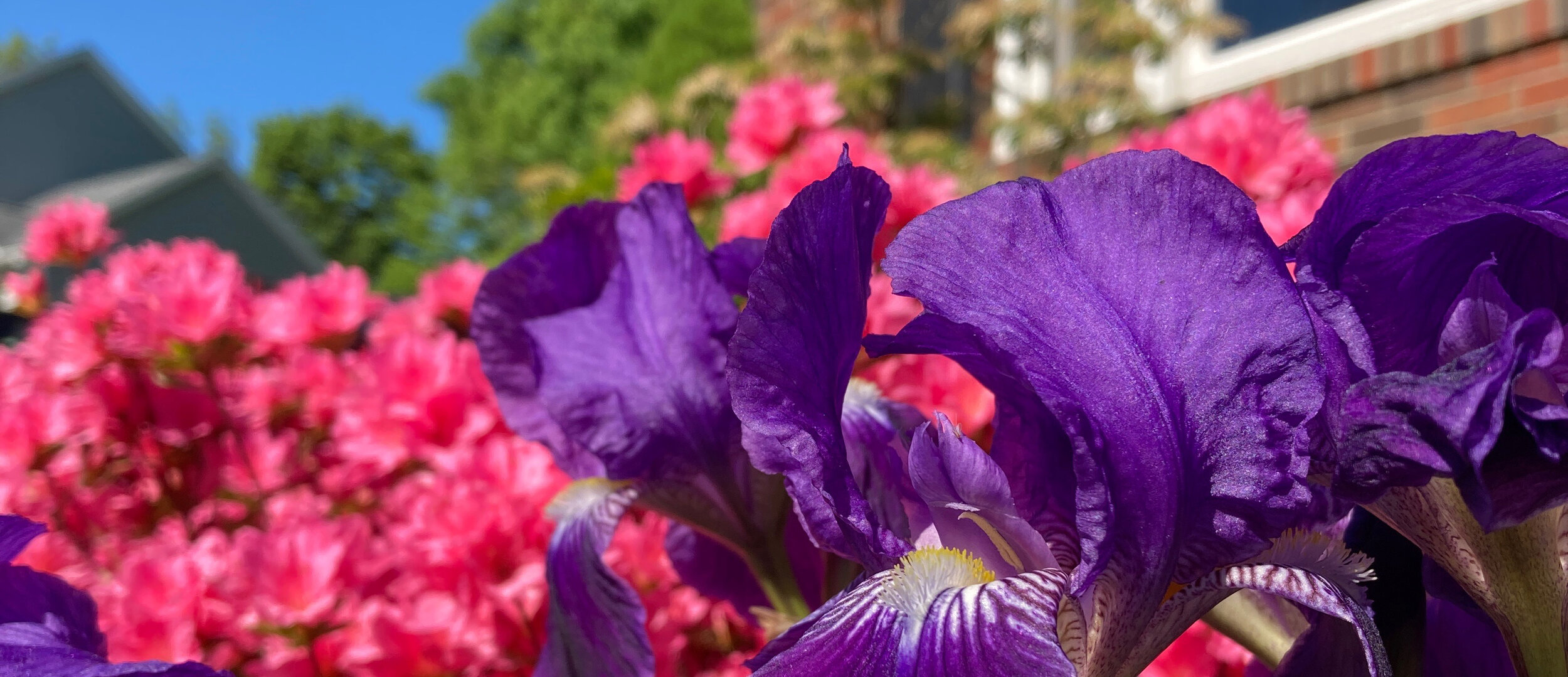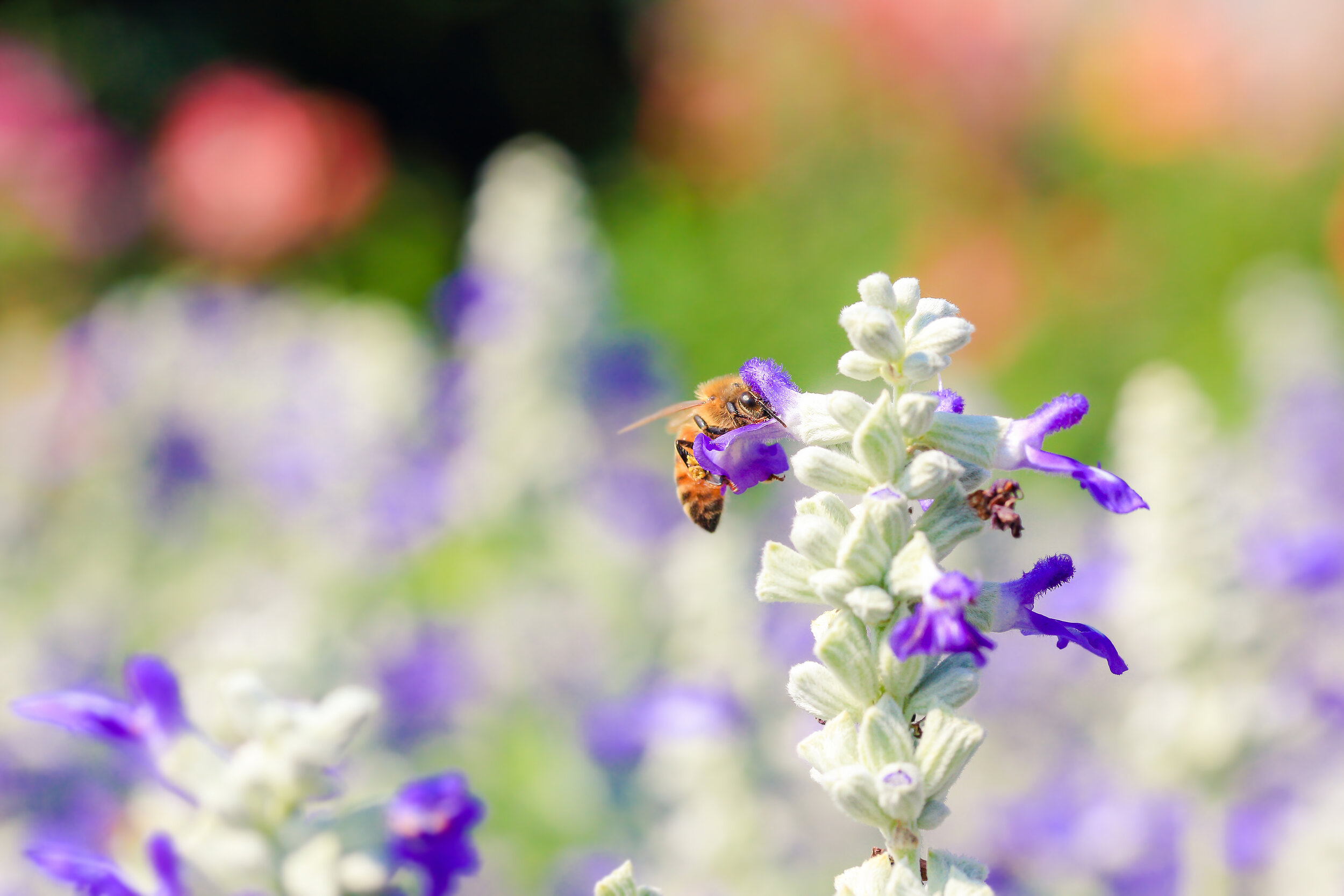SPRING: THE FLOW OF TRANSITION
As you lay in your cozy bed towards the end of winter, enveloped in the warmth of your blankets, you soak in the blue light of dawn as it seeps in through the edges of your windows. You are not yet fully awake, but you begin to activate in the early morning hours by becoming more aware, turning over, wiggling your fingers and toes, in preparation for a new day. For those who practice yoga, this point in the sleep cycle is very similar to the moments toward the end of savasana when you begin to stir before sitting up: the end of your practice and the beginning of whatever comes next. Late winter/early spring is much the same for the wheel of the year. As the season shifts from winter, with minuscule growth in the amount of sunlight each day, your body can sense the transition. These transitions, in the moment, seem so small and insignificant, but taken over time they create new manifestations, whether it be the growing light of the season, renewal of the body and mind, or the return of the our herbal plant allies) in their fullest form in the natural world.
The Goddess Parvati is the gentle and nurturing form of the “Supreme Being” in some versions of Hindu spiritual belief. She embodies the feminine Shakti energy and represents powerful regenerative forces. Her name translates to “daughter of the mountain.” When her form takes on the energies of the warrior goddess, she becomes Durga. Similarly, when her energy becomes chaotic and fierce, she transforms into Kali, the Destroyer. In her most benign and nurturing form, Parvati, she is mother of the universe, providing life and renewal to all of her children. And this transition from winter to spring is all about renewal, rebirth, and nourishment, just like Parvati provides. Even before you can see the changes beneath the melting snow, the soil below is full of activity. Incubating seeds begin to metabolically prepare for “birth” when the soil is warm enough. When the Full Worm Moon waxes in March, you guessed it, the worms have begun moving around, out of sight, aerating and fertilizing the deep unfrozen soil. A preparation for what is to come.
Parvati’s true regenerative forces can be felt as we move further into spring. The Full Pink and Full Flower Moons of April and May begin to color our landscapes again. From the gray and brown of March, we shift to chartreuse and lime green tinting the early part of April, and culminate with shades of pink, purple, yellow and brilliant emerald in May. With the gradual greening of the world around us, the sun’s warmth continues to renew and encourage us to release the bonds of winter and fully embrace a feeling of outward projection in our daily lives. The spring provides us with so many delicious and nutritious plant allies: stinging nettles, japanese knotweed, garlic mustard to name a few. Not only do these plants have many medicinal properties, but they also can be treated as “food as medicine” and cook up into some delicious spring meals. Dandelions begin to appear as spring continues providing both flower and leaf as food and as medicine. Eventually we see the violets and plantain: two HUGE allies to many systems in our bodies including our circulatory, excretory, and hepatic systems!
But let’s talk about your skin. Because renewal is constant in any cycle, and your largest organ--your skin--is continually undergoing renewal as you shed cells, spring is a wonderful time to slough off winter in preparation for the seasonal shift. And so many spring plants are known for their skin soothing properties! And let’s be honest, we all know how great it feels to exfoliate winter away and moisturize that new spring season into place while we let our skin see the light of day for the first time in months! A simple, pure, and easy homemade way to get these results is to make your own body scrub with sugar, nourishing oils, and some powerful herbal allies. You can control the quality of your own ingredients, and add whatever it is that calls to you, but here is our favorite recipe to help you glow like a goddess!
“Ostara’s Renewal” Green Tea Sugar Scrub
Ostara is another name for the Spring Equinox Festival celebrated in the northern hemisphere each year, and this scrub is a perfect recipe to welcome in the fresh energy! Green tea contains large quantities of antioxidant, anti-inflammatory, and antibacterial polyphenols. Dried green tea leaves are ground up finely and mixed with raw cane sugar (a gentle all natural exfoliant), raw honey (naturally antibacterial, moisturizing, and full of antioxidants), vitamin E (blocks free radicals from the body to reduce wrinkles and keep the skin youthful-looking), rosehip seed oil and evening primrose oil (both soothe, rejuvenate, and heal dry irritated skin).
Grapeseed, jojoba, & coconut oils (softening, nourishing, and moisturizing) are infused with violet, plantain, yarrow, calendula, rose, comfrey, and chamomile. This blend of beautiful garden-grown and wild herbs is chock full of healing, soothing, and anti-inflammatory properties.
Lastly, a blend of invigorating essential oils is added for their supporting aromatherapy benefits:
Rosemary (Rosmarinus officinalis) relieves fatigue
Grapefruit (Citrus paradisi) is cooling and energizing*
Sage (Salvia officinalis) is purifying and disinfecting
Peppermint (Mentha piperita) is refreshing and reduces inflammation
Ylang Ylang (Cananga odorata) is calming and improves circulation
*Use caution with grapefruit if you take statin drugs or have any heart issues.
You can of course blend any scents that work for you and your body.
Apply to damp skin in the shower, rubbing in a circular motion with short strokes towards your heart. Rinse off with warm water before getting out of the shower.
As the wheel of the year continues to turn and gradually the flowers of May turn into the warm buzz of June, verdant and fragranced with wild rose, we look forward to the hot and humid days of high summer and the long hours of sunlight around the Summer Solstice. During this time of bounty, renewal envelopes us allowing us to feel ready and excited for what is to come.

















